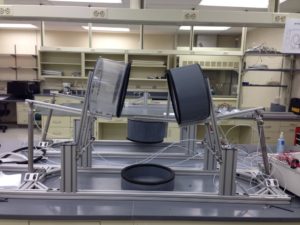Understanding controls on photosynthesis and ecosystem respiration in tundra ecosystems
The ability of arctic ecosystems to sequester carbon depends on the balance between carbon gain through photosynthesis and carbon losses through autotrophic and heteorotrophic respiration. All of these processes respond to environmental and biological variability, but understanding the controls on each individual process has been hampered by our ability to measure the component fluxes.
The eddy covariance technique measures the net flux of CO2, which is the difference between ecosystem respiration and canopy photosynthesis. Partitioning the net flux of CO2 (NEE) into photosynthesis and respiration requires nighttime measurements of NEE, when photosynthesis is zero and respiration dominates the flux, to be extrapolated to daytime periods. This is difficult in the arctic because of the constant daylight during the growing season. In this project, we have built automated chambers to measure the net exchange and its components in the same area over the course of a day. The chambers seal the system and allow CO2 exchange to be measured by the increase or decrease in CO2 concentrations in the air. NEE is determined by the clear chamber, the dark chamber determines ecosystem respiration, and the difference between these two measures is canopy photosynthesis. These measurements will be coupled with existing eddy flux databases in the arctic and mathematical modeling to improve our understanding of the biological and environmental controls on NEE in the arctic.

Automated NEE Partitioning Chamber System
